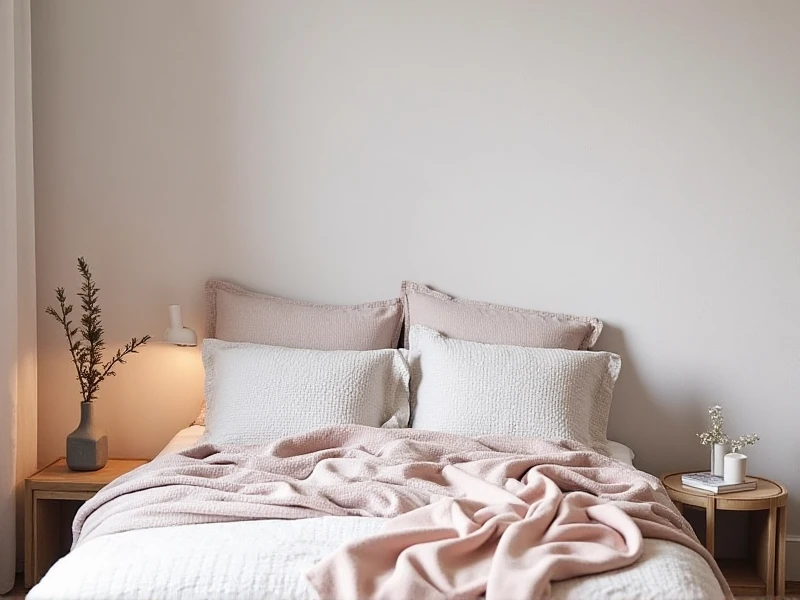Can Changing Your Pillowcase Improve Your Skin Health?
2025-06-05

You spend hours on your skincare routine – cleansers, serums, moisturizers. But what if a significant factor affecting your complexion is literally right under your cheek every night? Your pillowcase might be sabotaging your efforts!
Beyond comfort and bedroom aesthetics, the humble pillowcase plays a surprisingly important role in skin health and overall sleep hygiene. Choosing the right material and maintaining its cleanliness can make a noticeable difference, especially if you struggle with acne, dryness, or allergies.
Why Your Pillowcase Matters to Your Skin:
During sleep, your face presses against the pillowcase for hours. This cozy contact transfers:
Oil and Sweat: Naturally secreted sebum and sweat build up nightly.
Dead Skin Cells: We shed millions every day, many during sleep.
Residue: Leftover skincare products, makeup removers, and even hair products rub off.
Allergens: Dust mites, pollen, and pet dander can accumulate.
This cocktail creates a breeding ground for bacteria and skin irritants. Cotton, especially lower-thread-count cotton, can trap these substances against your skin, potentially leading to or exacerbating:
Acne ("Pillowcase Acne"): Clogged pores and bacterial growth triggering breakouts.
Irritation and Inflammation: Grinding against rough or dirty fabric.
Sensitivity: Reaction to build-up or harsh detergents.
Increased Signs of Aging: Friction can contribute to fine lines over time, especially with cotton's slightly higher friction compared to silk or satin.
Choosing Your Best Pillowcase: Material Matters Most
The material is king when selecting a skin-friendly pillowcase:
1. Silk (or Mulberry Silk):
Benefits: Renowned for its incredibly smooth texture offering the least friction for skin and hair. Hypoallergenic and resistant to dust mites. Naturally helps regulate temperature. Best for preventing friction-related wrinkles, frizzy hair, and skin irritation.
Care: Often requires hand washing or delicate machine cycles in cool water with a mild detergent. Dry cleaning or air drying is typical.
2. Satin (Usually Synthetic - Polyester or Nylon):
Benefits: Provides a very smooth, low-friction surface similar to silk but at a lower cost. Good alternative for reducing friction on hair/skin and preventing moisture loss.
Care: Durable and generally machine washable (cool to warm water) and dryer safe (low heat). More affordable than silk.
3. High-Quality, High-Thread-Count Cotton (e.g., Pima, Supima, Egyptian Long-Staple):
Benefits: Soft, breathable, natural, and durable. Ideal for those who prefer natural fibers and tend to sleep hot. Look for tight weaves (300-thread count ) for a smoother feel. Great all-rounder.
Care: Machine washable typically. May wrinkle more than silk or satin. Can feel rougher than silk/satin initially but softens over time.
4. Bamboo-Derived Rayon (Often called Bamboo):
Benefits: Naturally soft, smooth, and wicks moisture effectively (thermoregulating). Often naturally hypoallergenic and antibacterial. A sustainable choice when certified.
Care: Usually machine washable on gentle cycles. May shrink if dried in high heat; often best air-dried or on low.
Important Pillowcase Features Beyond Fabric:
Hypoallergenic: Crucial for allergy sufferers. Silk, bamboo rayon, and tightly woven cotton are good choices. Use dust mite covers underneath if needed.
Breathability & Temperature Regulation: Silk and bamboo rayon shine at wicking moisture and keeping you cooler than synthetics like standard polyester satin.
Weave Tightness (Thread Count/GSM): Higher thread count (for cotton) or higher GSM (grams per square meter) for silks/satins generally means a smoother, denser, more durable feel, trapping less dirt/debris. Don't be blinded by absurdly high counts though; focus on quality fiber first.
Deep Envelope Closures: Much more secure than zippers or basic overlapping closures, preventing pillows from sticking out.
How to Care for Your Pillowcases (Especially Skin-Health Focused):
Wash Frequently: Crucially, wash pillowcases every 2-3 days, minimum. If you have acne or sensitive skin, daily washing is not unreasonable. This prevents build-up.
Use Gentle Detergent: Avoid harsh chemicals, fragrances, and optical brighteners that can irritate the skin. Choose hypoallergenic formulas.
Rinse Thoroughly: Ensure all detergent residue is rinsed out.
Avoid Fabric Softeners & Dryer Sheets: These coat fibers, clogging them and potentially irritating the skin. They can also reduce breathability. Add white vinegar to the rinse cycle for natural softening instead.
Wash Pillowcases Separate: Don't wash them with towels or heavily soiled clothes.
Dry Properly: Follow care labels. Air drying is gentlest, especially for silk. Use low heat if machine drying synthetics or cotton.
The Pillowcase Bottom Line for Healthier Skin
Don't underestimate the power of your pillowcase. Optimizing this nightly companion by selecting skin-friendly materials like silk or high-quality satin and adhering to a rigorous cleaning schedule provides a clean, supportive surface for your skin. Think of it as a vital, final step, locking in skincare benefits throughout the night. The result? A clearer, calmer, and potentially younger-looking complexion awaits on the other side of your pillow.
Have you noticed a difference by switching your pillowcase type? Share your experience below!
Category: